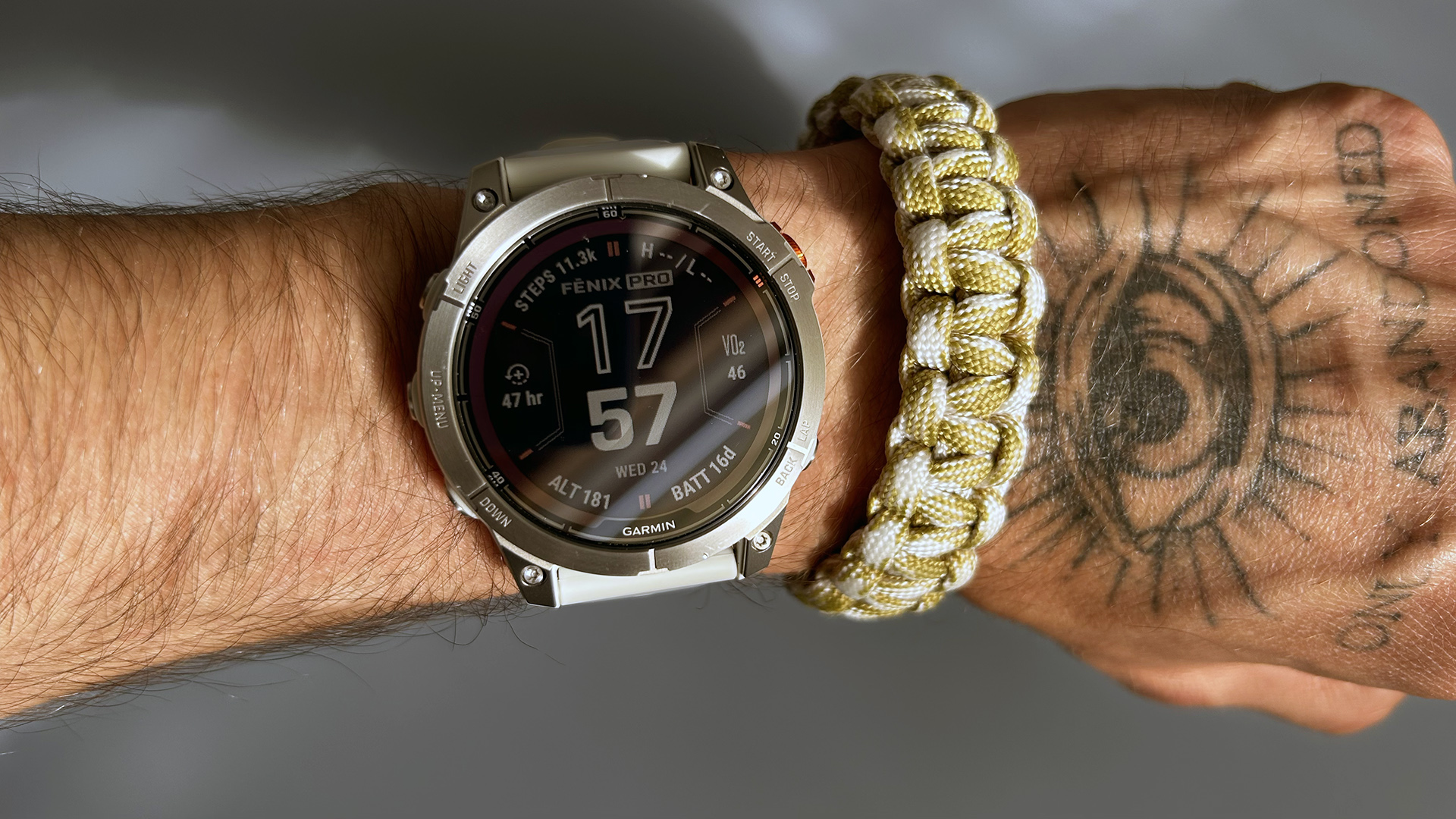
Garmin Fenix 7 Pro review summary: premium outdoor watch with a new screen, sensors and features. The updates feel a bit too much for an intermediate Fenix version, but if you have an older Fenix watch, it might be worth the upgrade.
I almost miss the days when there weren't new Garmin watches launching every month. Don't get me wrong; I will always be a huge sucker for the best Garmin watches. However, these days, it feels like Garmin is on a mission to oversaturate the market with new watches, drowning the competition in the process.
Take, for example, the Garmin Fenix 7 Pro – it's a brilliant outdoor watch. It has a new bio-sensor with a new LED structure and updated algorithm, a new Memory-in-Pixel display, and more features added, such as Hill Score and Endurance Score. It also makes the flashlight available in all sizes, unlike the non-pro version, which only included it in the largest version (see also: Garmin Fenix 7X review).
However, the Garmin Fenix 7 Pro feels like a half-update. It's not quite the Fenix 8 (more like Fenix 7.5), and most updates could've waited until that watch was launched. I don't dislike the Fenix 7 Pro, but I also feel it's somewhat unnecessary, an intermediate version for people who simply can't wait for the next generation to arrive. Should you get one, though? Let's find out!
(First reviewed in June 2023)
Garmin Fenix 7 Pro review: price and availability
The Garmin Fenix 7 Pro was launched on 31 May 2023 and is available to buy now directly from Garmin UK, Garmin US and Garmin AU with prices from £750/$800/AU$1,350. Available models include Fenix 7S Pro – 42mm, Fenix 7 Pro – 47mm and Fenix 7X Pro – 51mm, with options for standard and Sapphire Editions.
Comapre this with the original suggested retail price for the Garmin Fenix 7, which was £600/$700/AU$1,050. I know things aren't getting cheaper, but considering the similarities between the two watches, I'd think that no Fenix 7 owners will feel the urge to buy the Fenix 7 Pro. Garmin Fenix 6 owners might want to consider upgrading if the battery life on their watches isn't as good as it used to be.
Fenix 5 owners should definitely think about upgrading at this point; that watch was released in January 2017! I appreciate this is massive price bump, though. The asking price of the Fenix 7 Pro is around 50% more than for than what the Garmin Fenix 5 used to cost.
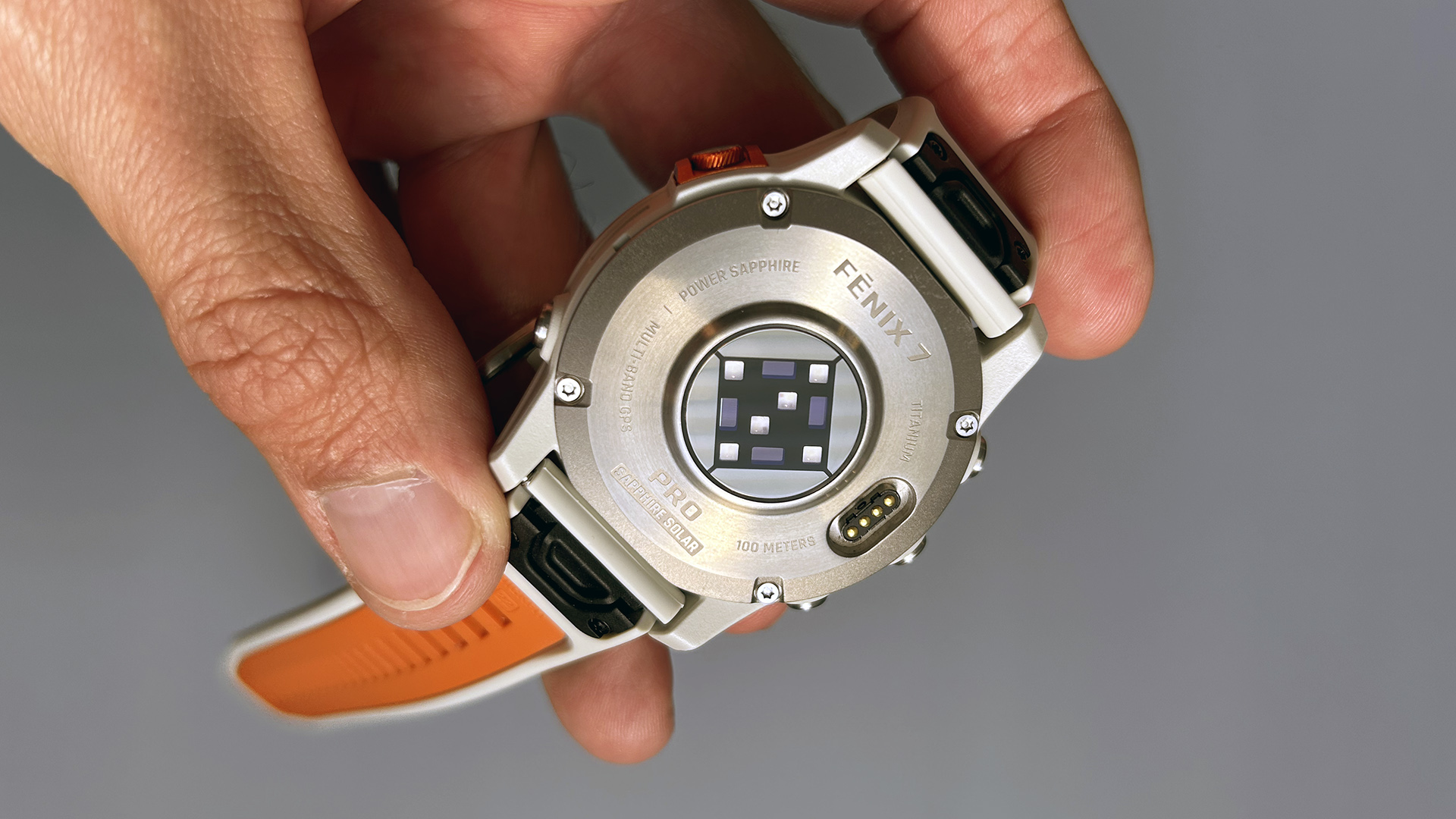
Garmin Fenix 7 Pro review: what's new?
The Garmin Fenix 7 Pro is simultaneously similar and different from the rest of the Fenix 7 lot. It uses the same premium materials and layout as all other Fenix 7 models and also looks almost identical.
One significant update over its predecessors is the addition of the Elevate Gen 5 optical heart rate sensor. The new bio-sensor is said to feature an improved optical layout with more "spatially diverse" sensors for better accuracy. The algorithm has been tweaked, too, to provide better estimations.
All Fenix 7 Pro models come with solar charging, and the photosensitive ring around the display not only harvests sunlight to help extend battery life but also acts as an ambient light sensor. The Fenix 7 Pro also has an updated Memory-in-Pixel (MIP) touchscreen display, which is said to be more readable in bright lighting conditions.
All three sizes now come with a physical flashlight. Previously this was only available on the largest Fenix 7X model. It's yet to be clarified whether this LED flashlight is the same as the Enduro 2's, which is said to be 50% brighter than the one found in the Fenix 7X.
Two new features have been added to the ever-increasing performance roster of the Fenix line: Hill Score and Endurance Score. However, these new features will become available on other Garmin watches soon, so not exclusive to the Fenix 7 Pro line.

Garmin Fenix 7 Pro review: design and build quality
For the casual onlooker, the Garmin Fenix 7 Pro looks similar, if not the same, to the Fenix 7. It uses the same materials (fibre-reinforced polymer case, stainless steel or titanium bezel and rear cover) and even weighs the same (50 grams, case only, Garmin Fenix 7).
The button layout is the same, and the software is essentially the same, too. One difference is the new Memory-in-Pixel display. Garmin says it features redesigned pixels, backlight, and solar panel to improve indoor readability, providing increased brightness, power efficiency and adaptability to different lighting conditions (via the ambient light sensor solar ring).
Another new addition is the flashlight, which is now available in all three Fenix 7 Pro versions, and the new fifth-generation Elevate bio-sensor. They call it a bio-sensor and not an optical heart rate sensor because it measures more than just heart rate, including skin temperature and blood oxygen levels. Weirdly, the Garmin Venu 2 Plus is still the only ECG-capable Garmin watch; I have no idea why Garmin are keeping that feature exclusive to one watch only.
The Garmin Fenix 7 Pro is touchscreen, and you can also operate the watch using the five physical buttons around the edge of the case. If you've ever used a Garmin, the Fenix 7 Pro works exactly the same way. The watch uses the same quick-fit bands as the standard Fenix 7; however, Garmin released a few new varieties, so there are more options now.
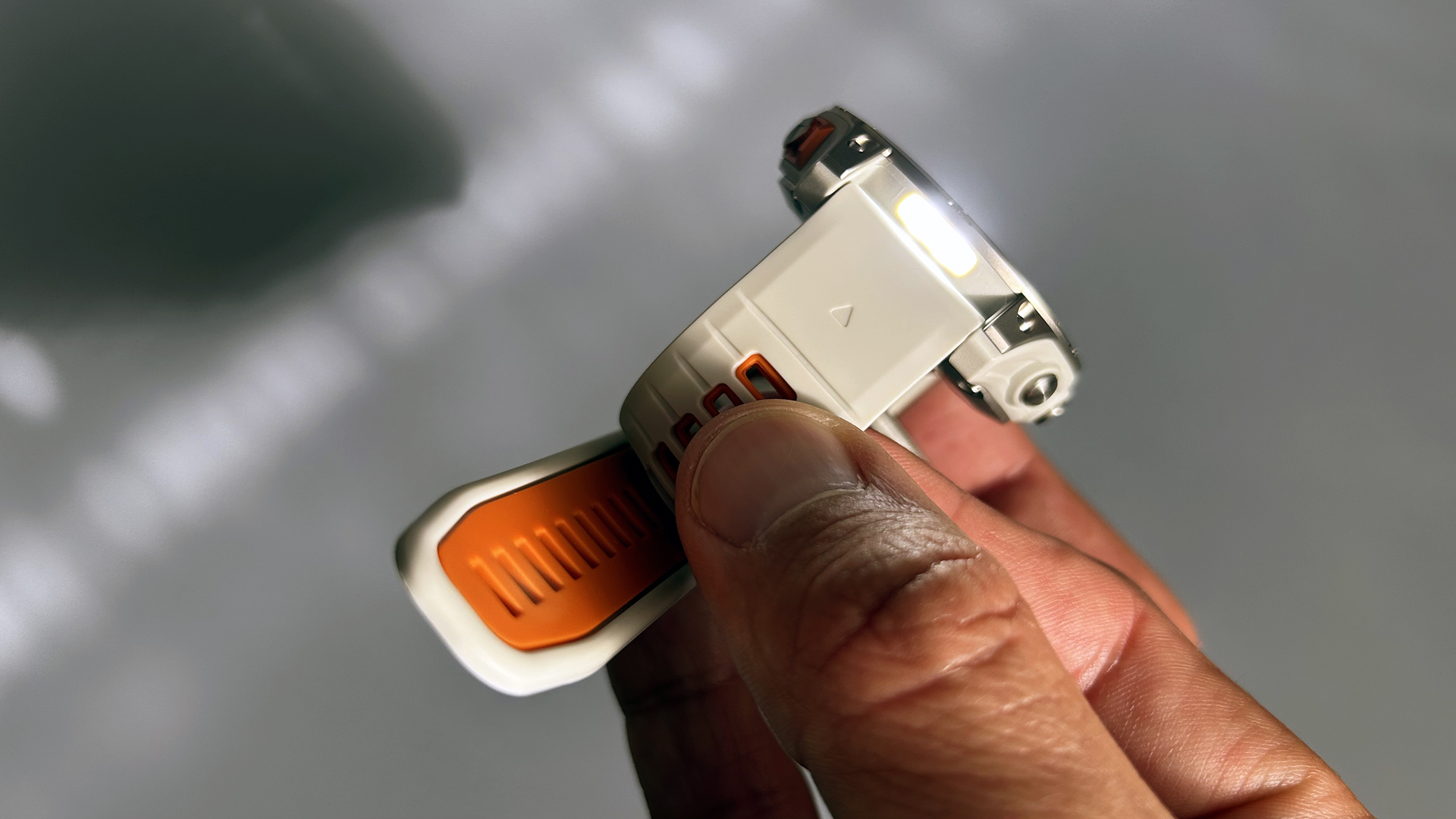
Garmin Fenix 7 Pro review: features
The Garmin Fenix 7 Pro has not only all of the original Fenix 7 features (see my review of that watch, linked above) but all additional features that were added ever since. These include all software upgrades introduced by the Garmin Forerunner 965, a watch I would highly recommend to everyone who's not keen on the ruggedness of the Fenix 7 Pro. The brand new additions are the Hill Score and Endurance Score.
Hill Score comprises two metrics: Hill Endurance and Hill Strength. Hill Endurance looks at performance over gradual ascents, while Hill Strength measures efforts on short, steep climbs. Combining the two will give you your Hill Score, which is a number between 0-100.
Endurance Score measures how easy it is to sustain prolonged efforts. Garmin says this new metric will help athletes better understand their endurance, as two people with similar Vo2 max numbers might have completely different Endurance Scores. It looks at all activities and highlights the 'top contributors' to the score at the bottom of the screen.

I haven't used the watch for long enough to be given these scores yet, as it takes two weeks for the Fenix 7 Pro to start generating them. Even when they are available, it would be hard to measure the accuracy of the arbitrary numbers the watch provides. Not to mention, with both scores, it's the trend that matters, not the initial number you're given.
Plus, there is no way to check the accuracy of a feature that measures things that aren't real, so to speak. Garmin doesn't disclose how they actually measure Hill Score, so there is no way to double-check the accuracy. That said, both scores provide yet another layer of understanding of especially running performance for athletes.
Both watches inherited the Up Ahead mode from the Garmin Enduro 2. This map feature provides points-of-interest navigation, like aid stations. You need a preloaded course to use this feature, but you can plenty of trails and races in the Garmin Connect app, and you can also create your own.
The maps on the Fenix 7 Pro now feature weather map overlays (to see upcoming weather conditions) and relief shading options. Relief shading provides topographic info on the maps to show where shades are most likely to occur at that time of the day. Maps have always been a strong suit of the Fenix line, although now that the Enduro 2 has maps, too, the lines are a bit more blurred.
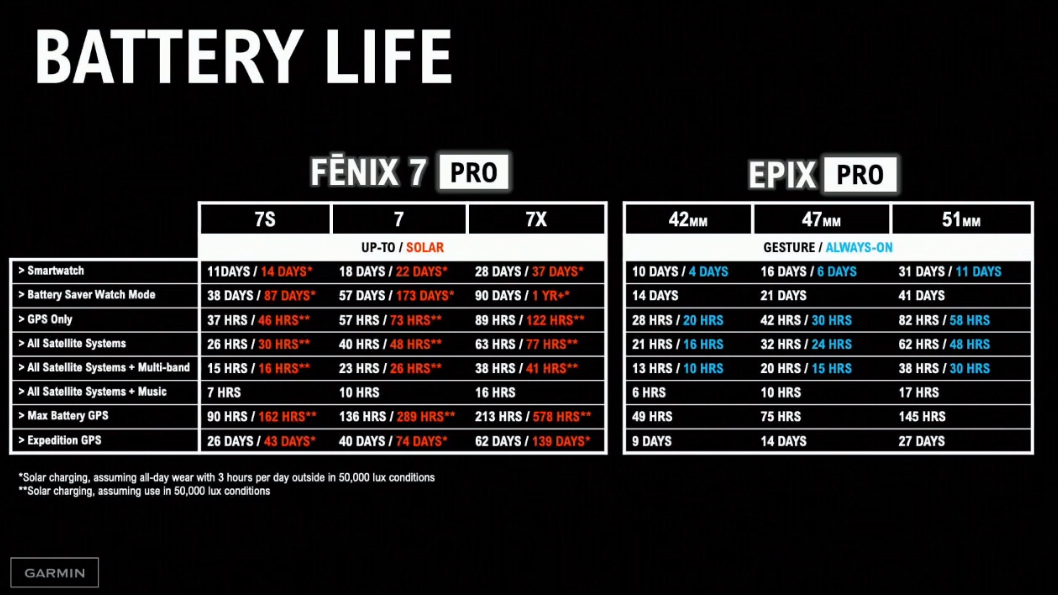
Garmin Fenix 7 Pro review: battery life
Battery life is essentially the same as on the Garmin Fenix 7 Solar models. You can see all the battery lives of all the different versions in the chart above. Long story short, neither Garmin Fenix 7 Pro models need charging more than once a week, and that's considering that you'll actually use the watch for training.
A few tips that might help you can extend battery life. You might want to make sure the watch isn't covered when you're outside so the solar harvesting ring can do its job and top up the battery. It's unclear if the Fenix 7 Pro can charge the battery via the photosensitive ring or whether it just helps not deplete as fast, but either way, exposing the wearable to light will help battery life.
If I were you, I'd also turn off the automatic blood oxygen measurements. This is a superfluous feature that usually adds nothing to the user experience but uses a lot of battery. Finally, you might want to set the bedtime routine when you set up the watch in the Garmin Connect app. When in sleep mode, the Fenix 7 Pro reduces the screen's energy consumption even more. (Setting up a bedtime routine in the app doesn't mean the watch will assume you are sleeping, by the way.)
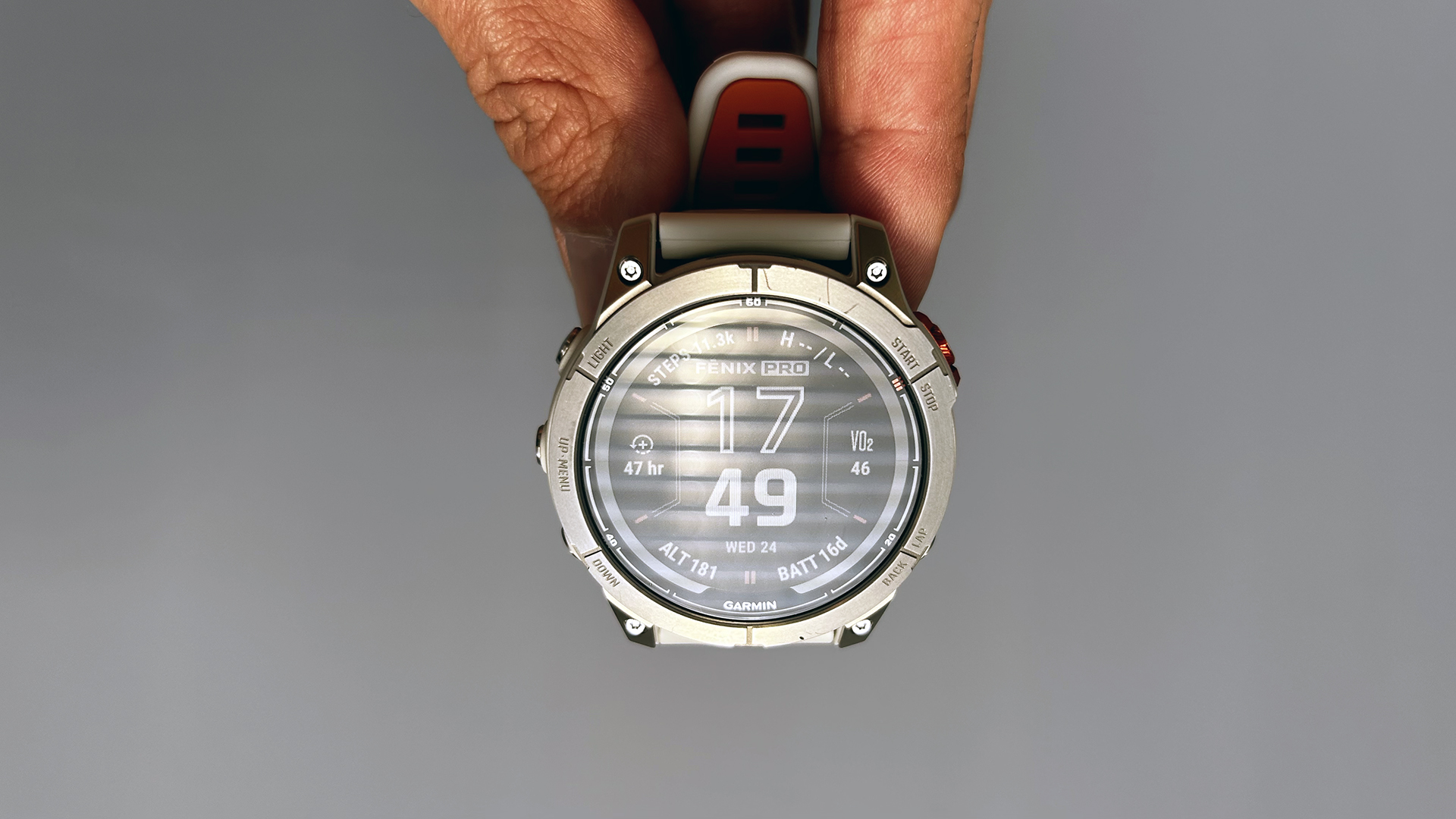
Garmin Fenix 7 Pro review: verdict
All things considered, the Garmin Fenix 7 Pro isn't just an exciting new wearable but also an excellent update to the Fenix 7. The new bio-sensor, updated memory-in-pixel display, and extra features almost make it feel like the Fenix 7 Pro is the Fenix 8.
This makes me both happy and sad. Happy because I love seeing, interacting with and testing new Garmin features. And sad because it makes me wonder if the actual Garmin Fenix 8 launch will feel half-hearted. Taking into account Garmin's release schedule, I'm expecting the Fenix 8 to be released next year, but surely, Garmin won't roll out a new bio-sensor just yet?! (Maybe they will.)
I'm a bit puzzled about the Fenix 7 Pro, as the updates feel almost too significant for an intermediate watch, which might frustrate people who own a standard Fenix 7. It's like Garmin is trying to tell people there is no point in buying their watches on launch day because there will be a newer one next year. Or, as it often happens, in less than 12 months.
All that said, there is a lot to love about this watch, and if you haven't got a Fenix 7 yet, because you're still holding onto the excellent Garmin Fenix 6 Pro, it might be worth getting this version.
Garmin Fenix 7 Pro review: also consider
The Suunto Vertical has excellent mapping features, long battery life and excellent build quality for half the price of the Fenix 7 Pro. The added solar charging option is also a step in the right direction for the Finnish brand. The CPU could be faster, and the screen brighter, but overall, the Suunto Vertical isn't the worst option for outdoor navigation. Read my full Suunto Vertical revew.
The Coros Apex 2 Pro offers an updated heart rate sensor, dual-frequency GPS chip, plenty of trail running and outdoor sports features, rugged titanium and sapphire glass design, an okay touchscreen display, and a lot of training support via the Coros app and the Coros EvoLab. It might not be as premium-looking as the Fenix 7 Pro, but for this price, that's far from being an issue. Read my full Coros Apex 2 Pro review.
Another Garmin with an epic price tag, the Epix Gen 2 is a premium touch-screen smartwatch offering topographic maps and on-screen animated workouts. The AMOLED screen is a joy to look at, and the battery life is brilliant, too. Check out my full Garmin Epix Gen 2 review, or read my Garmin Fenix 7 Pro vs Epix Pro comparison piece.







